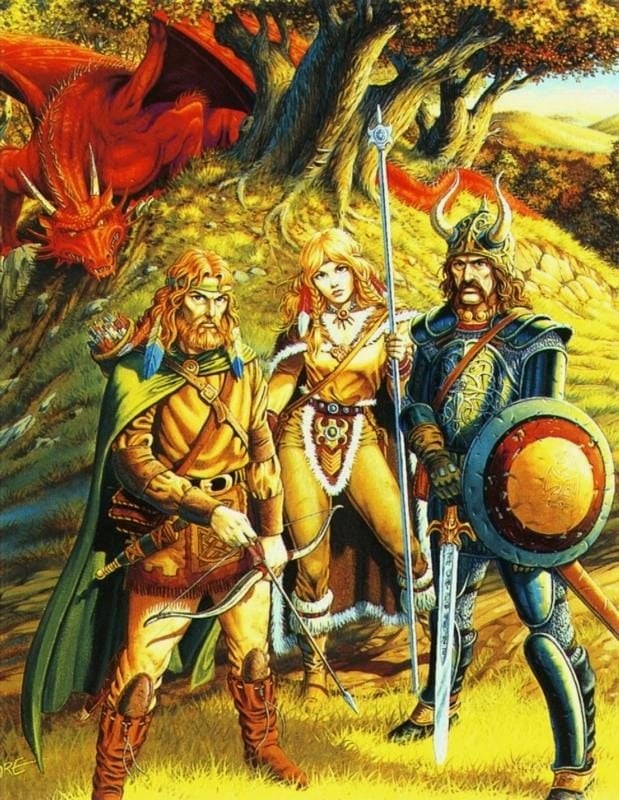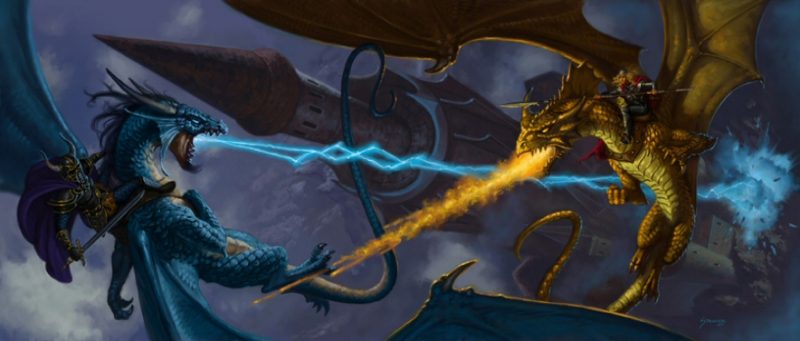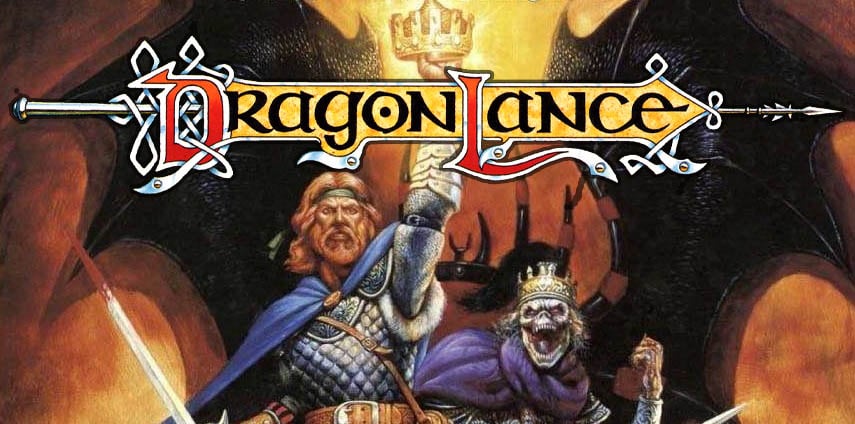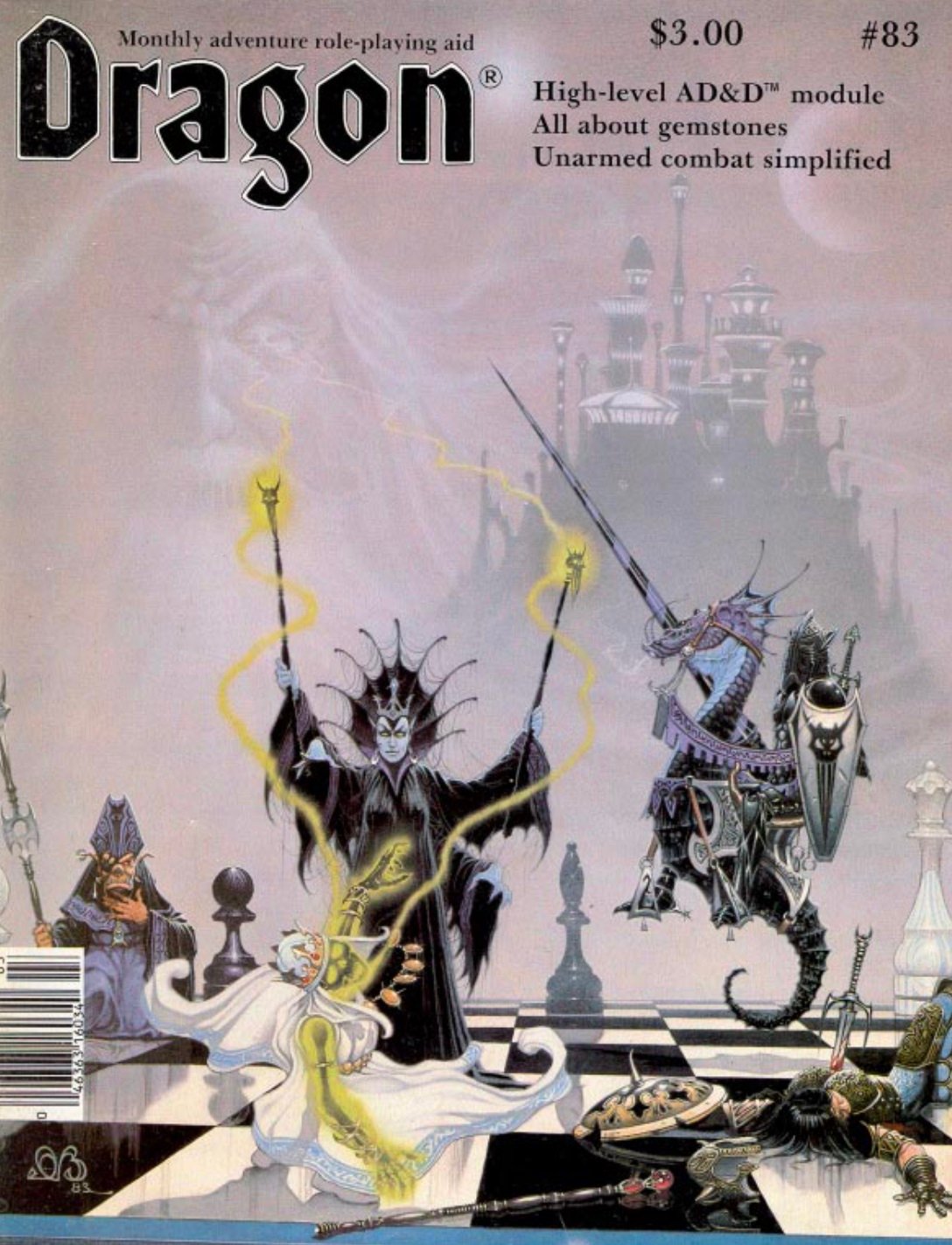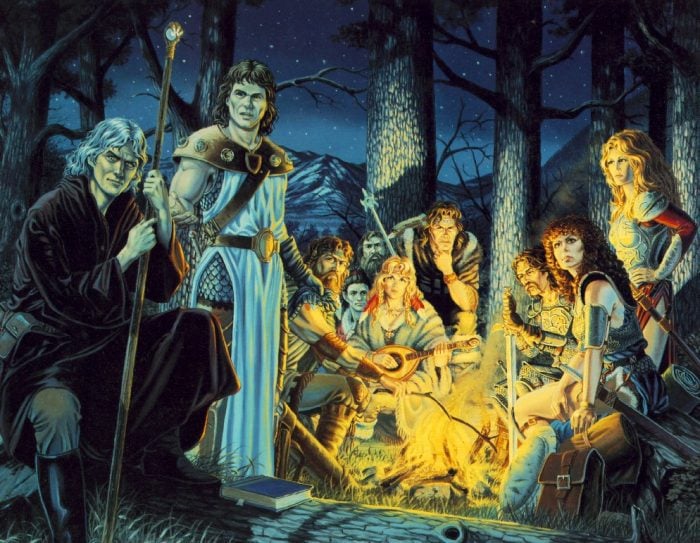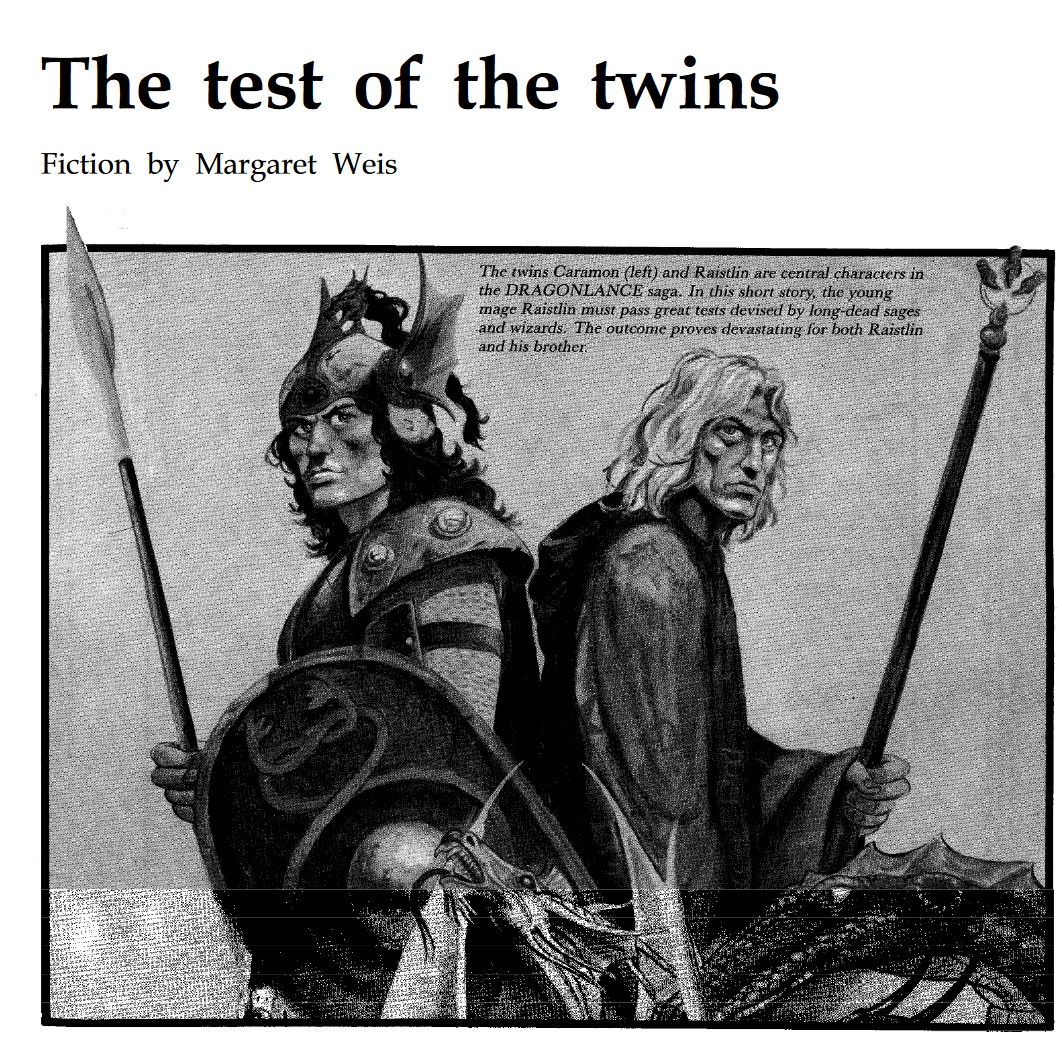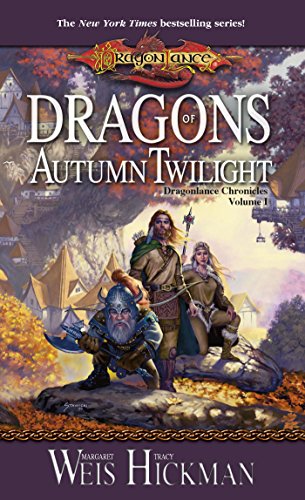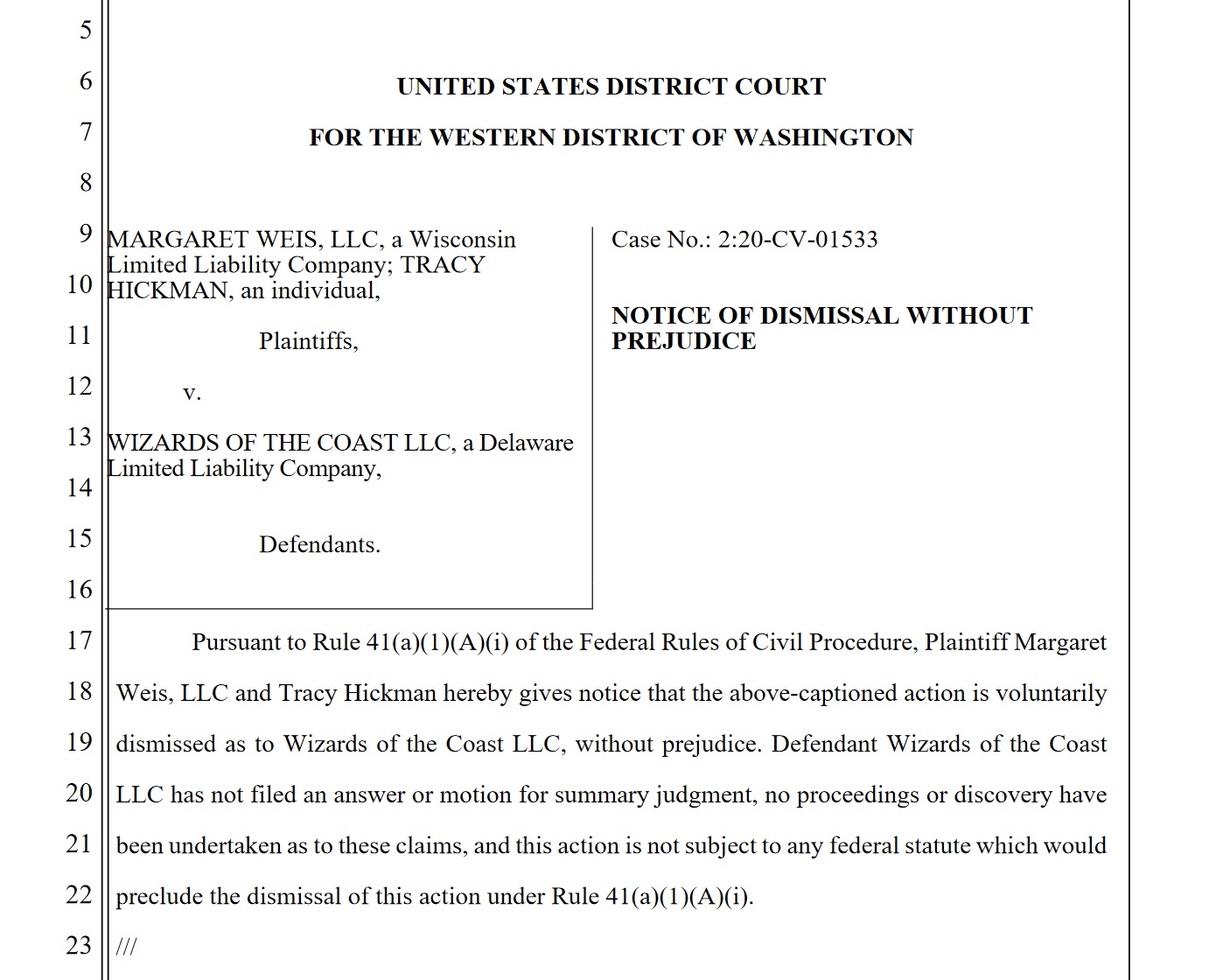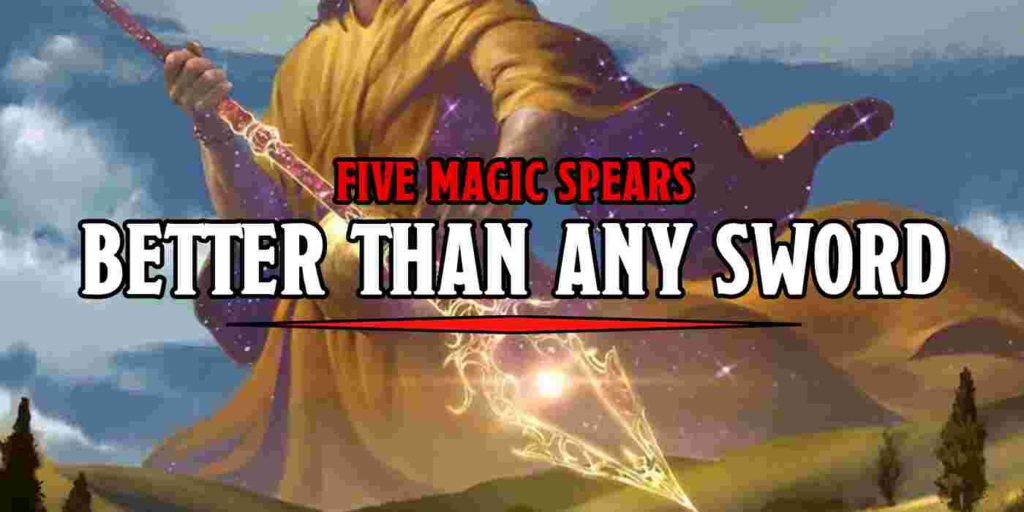D&D: How Dragonlance Was Born – Prime
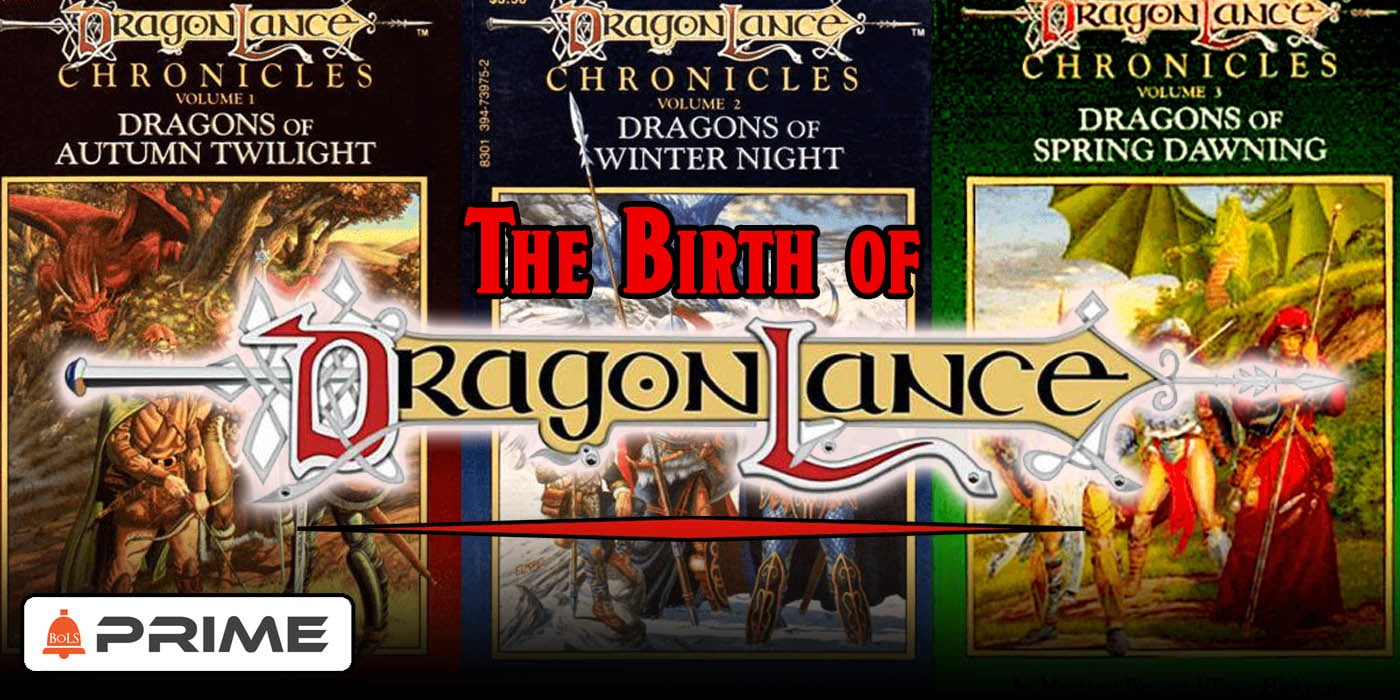
Dragonlance is one of the most well-known and well-loved D&D settings. But do you know how this campaign setting grew into a life of its own?
There are many worlds in Dungeons & Dragons, but none quite as beloved as Krynn. With three moons, each one as magical as the next, three “flavors” of magic, and enough evil wizards, heroic knights, and bearded half-elves to fill a whole party, Krynn has carved a place for itself in the legacy of D&D. It’s safe to say that Krynn owes the shape of the world, and indeed its entire existence to The Dragonlance Chronicles, a series of novels written by Margaret Weis and Tracy Hickman at the behest of TSR.
But the story of how Dragonlance came to be is a wild one, full of twists and turns. Dragonlance almost wasn’t, but it’s smashing success in the mid-80s led to a resurgence for a now-Gygaxless TSR. Come step back with us to the year 1985, when Clue and the Breakfast Club were making their mark on cinema history, and Margaret Weis and Tracy Hickman were celebrating the launch of Dragonlance. This campaign setting was a historic attempt at TSR. It was the first big push for someone to create a central story for Dungeons & Dragons.
Weis and Hickman tackled the rules-heavy concepts of D&D and interpreted them in novel form, which in turn gave them enough fodder to build out a campaign setting. It’s a real ouroboros of inspiration, but you can see where this is a distinctly “D&D” story: each of the main characters has a very distinct class, there’s an appearance of several magic items, including one of D&D’s most iconic artifacts, the Orbs of Dragonkind. In fact, they are a central plot device for a time.
The Dragonlance Chronicles center around a party of adventurers as they take part in the big world-shaking event de jour, the War of the Lance. As the backstory goes, the gods turned their back on the world because of one man’s hubris, even going so far as to throw down a mountain of fire upon the city that had torqued them off the most. A change that remains setting canon to this day.
But where did it come from? The story behind Dragonlance is an interesting one. There’s a common myth that Dragonlance grew out of a campaign that the creators were playing in, but the truth is much stranger. The iconic campaign world, originally dubbed “Project Overlord” comes about as the result of several disparate events.
- A 1983 marketing survey informs TSR that D&D is their best selling product, and many of their books feature dungeons, but almost none feature dragons, telling TSR to “Make more books about dragons”
- Tracy Hickman join TSR and get assigned to a team meant to develop a line of modules each featuring a different dragon
- A “conspiracy” of designers abandon the project and instead develop a game about dragonriders and when TSR wants books and posters and calendars, a young editor, Margaret Weis, is assigned to the team
It all starts back in 1982 when Tracy Hickman decided that dragons weren’t as fearsome as they should be in D&D. This is a sentiment that continues through to 5th Edition today–but that’s a story for another time. For now, Hickman begins reaching out to fellow TSR creators, getting them interested in a project that would create a world where dragons were as wondrous and powerful as the myths that inspired them.
The initial team consisted of Hickman, Harold Johnson, TSR’s director of Game Design and Research, and Jeff Grubb. Between the three of them, they came up with a set of gods and the bones for a three-adventure trilogy that focuses on dragons. They contact D&D collaborator Larry Elmore to create some concept art to pitch to the higher-ups. But it’s not until Margaret Weis joins the team that the setting finds its legs.
Under the guidance of the Overlord team, Dragonlance morphs into something far beyond its initial three adventure scope. Working together, the team shifted, creating a 12-adventure epic laid out in three sets of four adventures. And in each of the adventures, a different color dragon was the centerpiece.
Another departure from the TSR norm is that instead of each adventure being a dungeon crawl or wilderness exploration, these adventures would tell a story from beginning to end, all taking place during a massive war fought in the world of Krynn.
These adventures are successful beyond TSR’s initial expectations. After the first of the series, Dragons of Despair, launches in 1984, the seeds of Krynn are sown. But it’s not enough. What really set the world to blossom into the beloved series we know today was a push by TSR to feature fiction that helped promote Dragonlance as a full multi-media experience.
Yes, despite Gygax’ being ousted off to Hollywood, TSR had been bit by the multi-media bug. Everyone wanted more than just adventures. They wanted miniatures, calendars, merchandise… and especially books. Margaret Weis pens the first official Dragonlance story, The Test of the Twins, published in Dragon #83, and these short snippets in Dragon magazine generate more and more interest.
Around the same time, TSR’s publishing department–that’s right, they had their own publishing wing for a time, which ultimately led to their downfall but also helped bolster them through harder years–was coming off the rampant success that were the Endless Quest books. These choose-your-own-adventure-inspired books were enough to build a publishing empire for TSR, and the built-in book market was rife for more.
And with TSR offering low rates and royalties, it would take someone who really cared about the setting to make it come to life. So Margaret Weis and Tracy Hickman team up to tell the story together, writing a prologue and five chapters to pitch their idea to TSR’s editing staff. By the end of 1984, they finish writing Dragons of Autumn Twilight.
This novel was a smash hit. It found an audience hungry for more drama and action, eager to know where the story would go. And with the promise of much more Dragonlance in the future, TSR quickly pivoted. Two more books, Dragons of Winter Night and Dragons of Spring Dawning follow suit, pushed out by the end of 1985, which cements the setting in the hearts of gamers around the world.
This first trilogy locked in a legend, and many would soon follow. Through the years there have been almost two hundred Dragonlance novels. That is a lot of Dragonlance. With such success behind them, it’s little wonder that Weis and Hickman would feel underappreciated, and by 1995 they had left TSR, only to rejoin back in 2000 when Wizards of the Coast acquired D&D. They worked producing Dragonlance novels up until 2007 (with the last one released in 2011), and that might have been the end of it… until last year, when news of a new Dragonlance trilogy broke amid a lawsuit. The lawsuit has since been settled, and Dragonlance is poised to once more rule the skies of our fantasy worlds.
It’s a world shaped by novels and guided by adventures. With millions of words exploring every corner of the realm, the world of Krynn is one that we’re eager to see return again. We know, at the very least, we’re due for another one in July. Here’s hoping that when we return to Krynn it’s with the warmth that brought us the first trilogy of novels. With Weis and Hickman back at the helm, the future looks magical for the world of Krynn.
Happy Adventuring!

